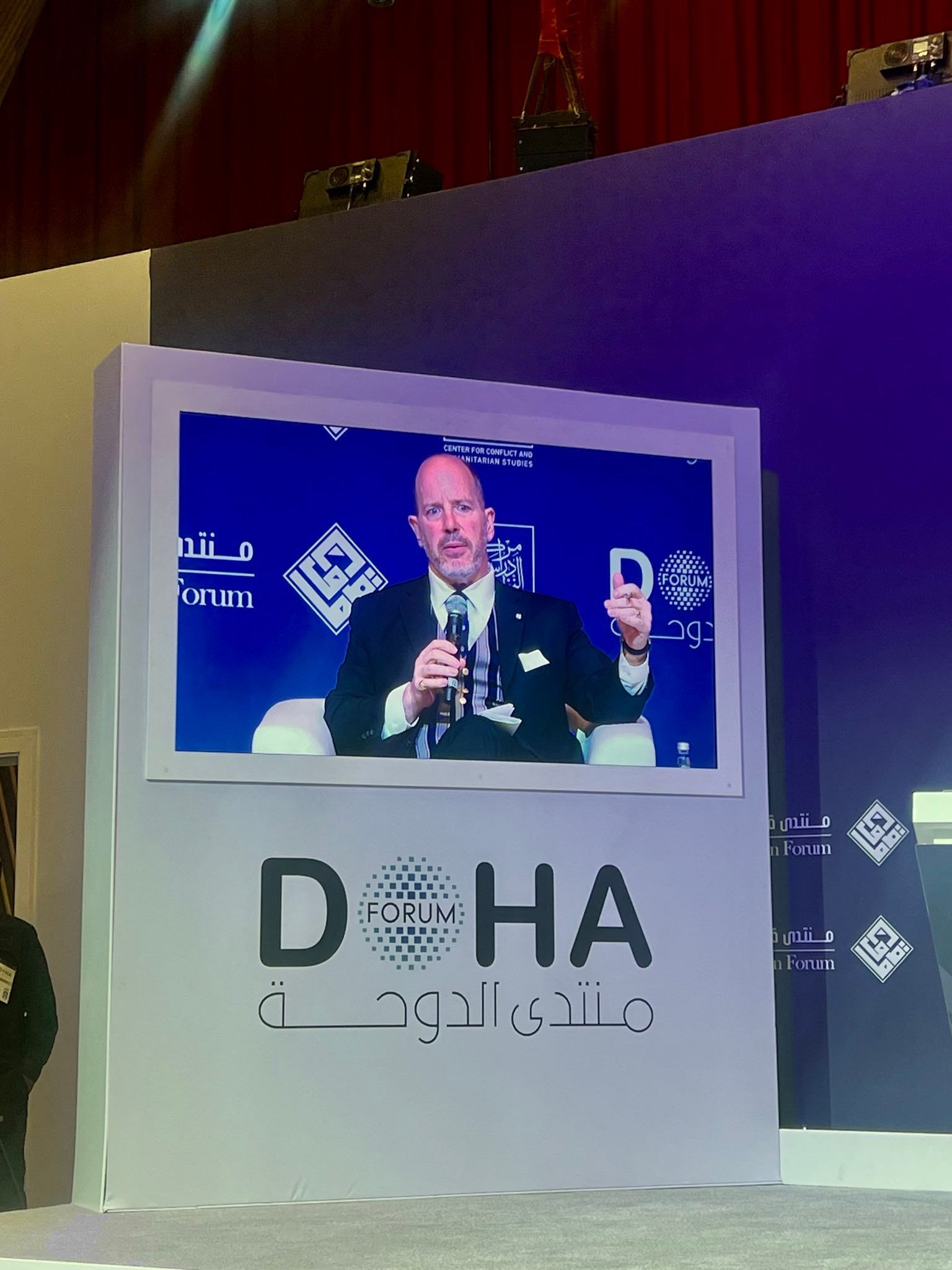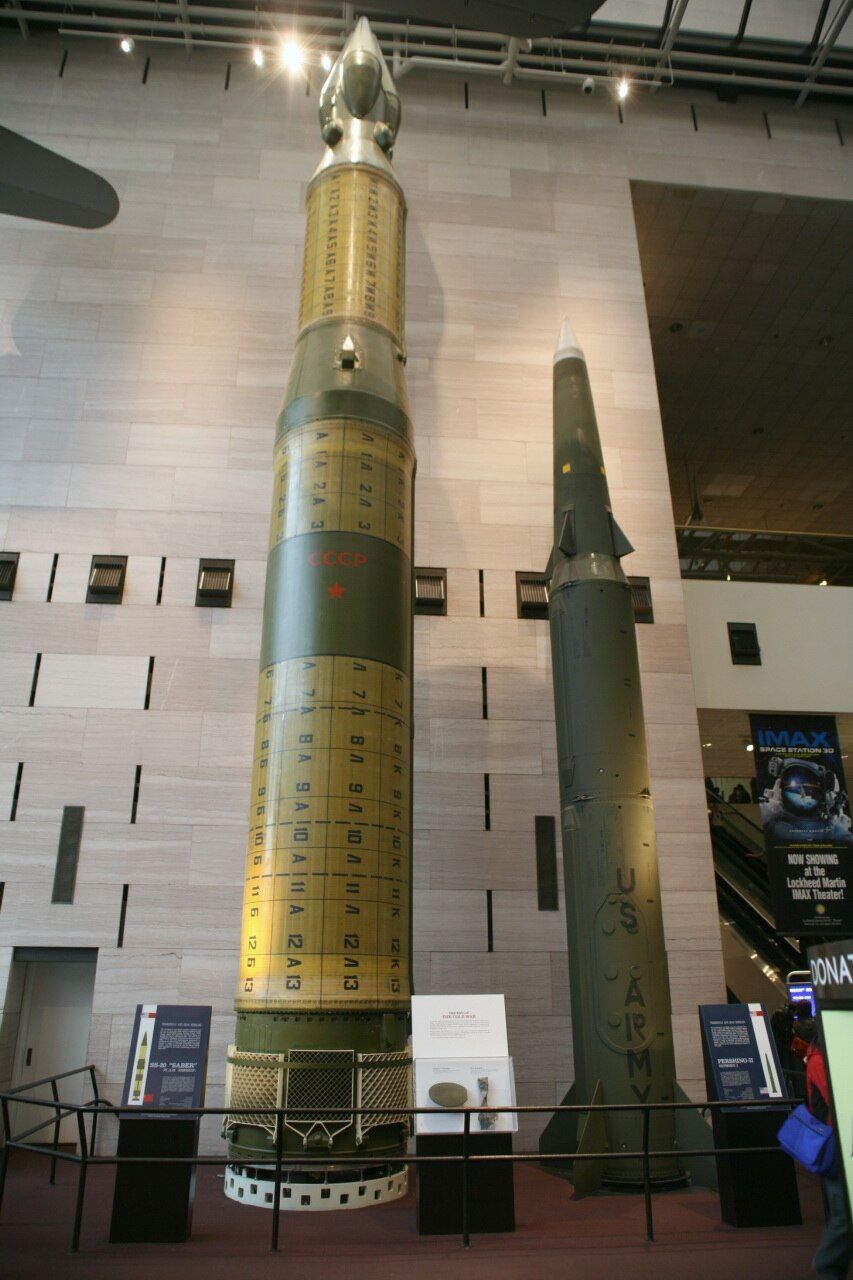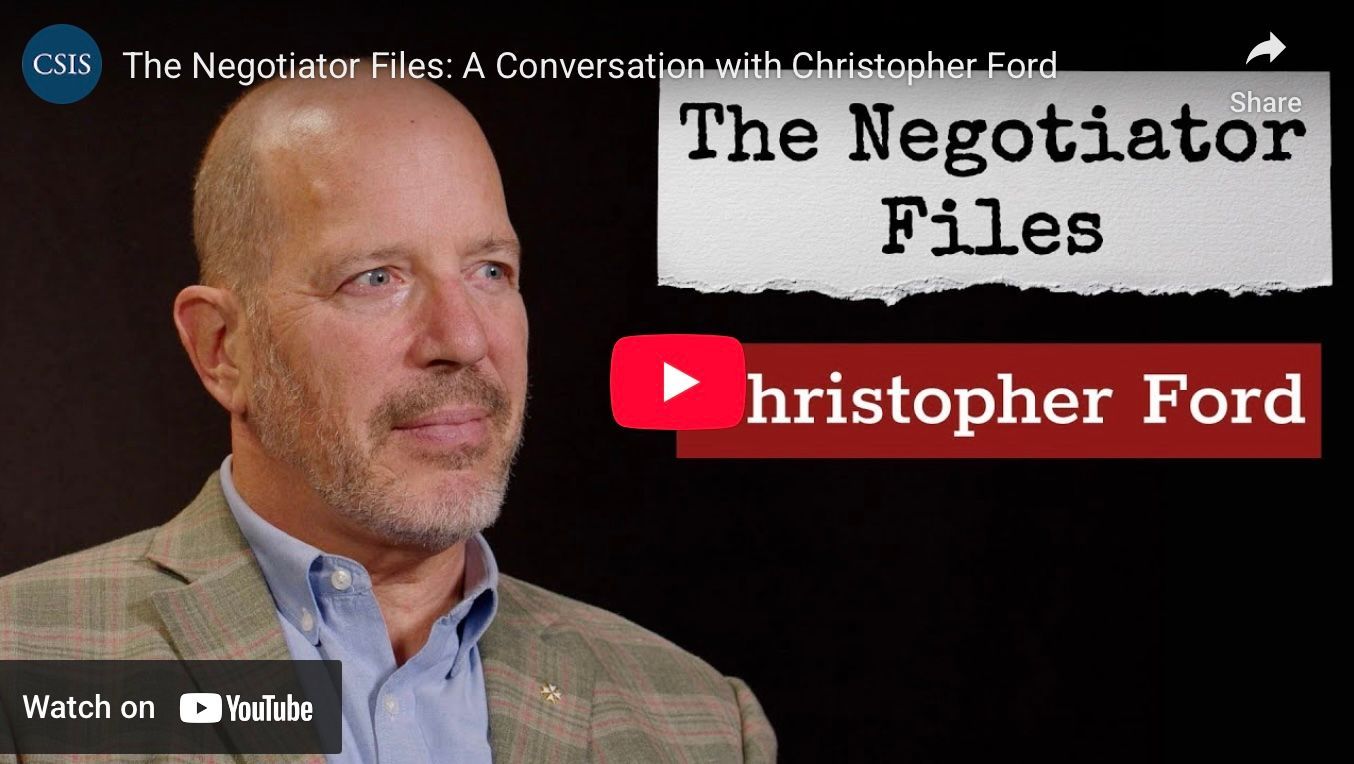Nuclear weapons spending: A Strategy for the Future?
Note:
Below appears the text upon which Dr. Ford based his remarks to an event at the Rayburn Building of the U.S. House of Representatives on January 18, 2013, sponsored by the British American Security Information Council (BASIC) entitled “Nuclear weapons spending: What does the United States need and why?” Ambassador Steven Pifer of the Brookings Institution also took part in the discussion.
Good afternoon everyone, and many thanks to Rebecca Cousins and BASIC for organizing this event today, to Prospect Hill for sponsoring, and to the House Armed Services Committee for providing this venue.
We’ve been asked to discuss the question: “What nuclear arsenal does the United States need, and why?” Nobody but the most blinkered ideologues on either the dovish or hawkish sides of modern nuclear weapons debates think that this is an easy question to answer. Let me start, however, by emphasizing just how very hard it is, because I think important lessons are to be found in this uncertainty.
I. Planning to Expect the Unexpected
To speak coherently about what we need – especially over time – we have to have a pretty clear conception of what we think nuclear weapons can do, and how they contribute to security, what the elements of strategic stability actually are in the first place. In order both to deter war and to be able to prosecute it if deterrence fails, moreover, we need a pretty good idea of the relevant threat environment, what various nuclear tools can accomplish against it in physical terms, and how this compares with what we think will be required in order to deter and/or defeat potential adversaries within it.
Not even the most enthusiastic hard-core supporter of nuclear weaponry thinks this is anything like an exact science, but it’s worth pointing out some of the challenges. During the Cold War, we had decades to study and posture ourselves against an essentially inarguable adversary, the USSR, but debates still exist – fortunately now just academic ones, but with important implications – over precisely what impact our force posture had upon Soviet thinking and planning. That was one adversary over a long period of time, but as today’s nuclear weapons world becomes increasingly multipolar and we continue to reduce our numbers – presently down about 80 percent from what we had at the end of the Cold War, and more still from our peak of more than 31,000 warheads in 1967 – we have to think about axes of deterrence vis-à-vis multiple players each potentially very different from the next. What mix of nuclear capabilities, and size of arsenal, is needed against them , either individually or in some potential combination?
Nor is the challenge just one of looking around the world and trying to figure these things out along multiple axes today. One of the great problems of this field is the enormous lead-time involved in system development, and the fact that we are approaching important decision-points for our own arsenal development and maintenance in the face of what are in effect looming block-obsolescence problems. Our contemporary choices will determine our capabilities for a very long time in a future threat environment about which we really know remarkably little.
Let me give an example. Planning began for what became today’s Ohio -class ballistic missile submarine and its Trident missile in the year that I was born: 1967. The first contract award for the boat was in 1974, construction began in 1976, and they began to enter service in 1981. Significantly, as currently anticipated – that is, even with full planned funding and without further slippages – we won’t see the first Ohio -replacement boat until 2021. It has already been 46 years since work began on the Ohio system, which remains a critical element of our strategic Triad, and it will be quite a few more until we even start to see its replacement.
Perhaps it’s useful to offer some context, because you House staffers tend to be on the younger side. When planning began on the Ohio and Trident system, the Vietnam War was still picking up steam, the Cultural Revolution was just beginning in China, only about ten countries had nuclear power reactors, and the Soviet Union seemed to be doing pretty well under a relatively new leader named Leonid Brezhnev. No human had ever left Earth orbit, the Shah of Iran had just his coronation, and no one knew what a microchip was. The Chevy Camaro was a brand-new type of car, John McCain was a brash young Navy pilot bombing Hanoi, and a television program called Star Trek was in its first season. All this was indeed a long time ago. Yet we’ll have Ohio -class boats on deterrent patrols until 2040 – when I’ll be well into my 70s.
Assuming that we do get the first Ohio -replacement boat in 2021, moreover, adding this kind of timeframe on top of its arrival means that we are planning today for the details of our nuclear deterrent into the year 2080. Anyone who thinks he or she can clearly predict what deterrence will require then , I fear, is essentially crazy.
(Nor can one take too much solace from current trends, though of course part of my point is that one cannot really know whether current trends will continue. To be sure, there have been considerable reductions in strategic nuclear tension and in the size of the great powers’ arsenals since the end of the Cold War. But at least four nuclear weapons possessor states are presently both modernizing and building their numbers up as we come down , the nonproliferation regime is not stopping nuclear weapons capabilities from spreading to new players, and our confidence in nuclear, chemical, and biological weapons-control verification is eroding. Moreover, the conventional military superiority upon which we have depended in order to reduce our own reliance upon nuclear weapons is under unprecedented pressure from the fiscal crisis created by our skyrocketing domestic spending and indebtedness, as well as from other countries’ military-technological advances.)
How does one plan for security and stability against this kind of threat-uncertainty, especially over time frames stretching into the late 21st Century? One answer might simply be to “aim high” – keeping a very large arsenal on the theory that it would be better to get the recipe wrong by having too many than to err by having too few and seeing deterrence fail. There’s a very respectable logic in this, but for various reasons such an approach isn’t a particularly attractive option for us at the moment. As we search for a philosophy and a strategy to inform and guide our planning for the late-21st-Century future, I suggest that a wiser option is to make our force posture as agile , flexible , resilient, reconfigurable, and re-expandable as possible, even – and indeed probably especially – if we wish to reduce its size further.
In his day, Herman Kahn – a seminal nuclear strategist and the founder of Hudson Institute, where I work – spent some time on the issue of how to plan against radical uncertainty. He had much to say about it, including arguing the need not to disarm “too much,” lest the need for verification certainty, which is at its maximum at the point of nuclear weapons abolition, outrun our intelligence and analytical capabilities in a very complex world. But Kahn also made a very important point in urging planners to consider approaches that may not be absolutely ideal against any particular future scenario, but which perform pretty well against a broad landscape of future possibilities. Since the future is unpredictable, he suggested, we should consider how our strategies can handle “‘off-design’ situations.” To me, this sounds like a sensible way to approach nuclear force planning – and perhaps, indeed, the only way to do so responsibly under the circumstances.
What does this mean? Well, to borrow from the old wisecrack about real estate values, I think the answer is “hedging, hedging, hedging.” To my eye, this means that we can probably live with a “smaller” force, but only if we shrink it intelligently – specifically, by ensuring that (a) what we retain is both as carefully-tailored to current and projected future threats as possible, and (b) we remain well positioned to change course, perhaps repeatedly, as the future throws new circumstances at us. (I know that many disarmament advocates place great stock in the notion of “irreversibility,” but even if real irreversibility were achievable – and, just for the record, it isn’t – its valorization is more a matter of arms controller theology than sound strategic reasoning.)
Here, however, I may have to disappoint you. Though arsenal numbers might be able to come down, this approach would not necessarily result in cost savings, at least in the short run. You may have been hoping to hear from me that there are ways to plan wisely for the nuclear future and save us lots of money now, but I doubt this is the case. We might indeed be able to save money over time, but getting to a prudent and sustainable architecture – even a smaller one – is probably not a notable cost-saver in the short to medium term. Transitions cost money, and we need one. I hope our government is wise enough to recognize this.
II. Elements of a Strategy for the Future
Anyway, with that apology to the fiscal hawks, let me suggest some of the elements that such a transformed nuclear posture might include:
- We need continued and ongoing modernization of the “Triad” structure of our deterrent force – conceivably, however, replacing our Minuteman III force with a mobile missile, as the U.S. Air Force is today said at least to be considering – in order to ensure technical redundancy as well as survivability, and to keep our industrial base alive along a broad spectrum of nuclear-related technologies.
- We need to expand plutonium “pit” production and nuclear warhead manufacturing capabilities in order to enable not just warhead refurbishment to ensure reliability of whatever arsenal size we adopt, but also a meaningful capacity to re-expand that arsenal relatively rapidly if the threat environment warrants. (A significant capability to make new pits is necessary, well beyond our meager current capacity of about 11 per year. Developing an improved ability to re-use pits might help augment this, at least for a while, but if we are serious about retaining the ability to re-expand, it would be necessary to couple re-use planning with a decision to forego complete dismantlement of “retired” weapons in order to maintain a sort of “pit reserve.”)
- We need to ensure the availability of redundant warheads for every delivery system – though perhaps we can save money over time by having designs usable on multiple systems, rather than by continuing to maintain two unique devices for each system. The United States is beginning to move down this road now; this approach should be continued and expanded.
- We should shift to a “rolling remanufacture” basis for warhead maintenance. This is important in order to reduce the challenges of reliability-focused stockpile stewardship, which is especially needed as numbers come down. Such an approach, however, also offers other significant advantages, not least by permitting us to incorporate state-of-the-art safety and security technologies, maximize weapon suitability vis-à-vis changing threats, and perhaps even to lessen the expense, danger, and difficulty (and to improve the verifiability) of any future dismantlement. (We need to get beyond the current politically-correct distaste for “new” warhead designs, a taboo that some other major players don’t seem to accept, and that the Obama Administration may be quietly “fudging” in any event. New designs, and indeed new military capabilities, are not per se problematic, and indeed may sometimes contribute to deterrence, to stability, and to the cause of arms reductions. That’s surely not always the case, of course, but details matter, and we shouldn’t be afraid to debate and consider the merits.) Such a shift to ongoing warhead remanufacture would also help ensure that future generations of weapons scientists and engineers retain “hands-on” experience in what is by many accounts still a largely “apprenticeship” art. It might also permit more manageable budgeting and infrastructure planning, by reducing the degree to which we have to rely upon a messy cycle of atrophy-inducing “fallow” periods interspersed by spasms of heroic warhead life-extension.
- We need ongoing investments, and improvements, in command-and-control robustness and reliability. This would benefit both deterrence and our potential warfighting capability if deterrence fails, as well as helping to reduce “launch-on-warning” crisis-instability pressures without the (also-destabilizing) “remedy” of thorough force “de-alerting.” This topic is hard to discuss in the unclassified world, but the Obama Administration claims to recognize this and to be committed to improvements. We must not forget this important factor in the years ahead.
- We must maintain a healthy state-of-the-art weapons design capability staffed by first-rate intellects, not only in order to ensure that our weapons are themselves optimally safe, secure, reliable, and effective against changing threats (see above), but also in order to help keep our national leaders informed about the implications of what other weapons states are doing. Such a base of knowledge and experience is also essential in support of analytical tasks such as verification and compliance analysis in the arms control and nonproliferation arenas.
If we had the kind of confidence in the agile “reconfigurability” and “responsiveness” of our force posture and our weapons and delivery system infrastructure that such policies would foster, I’d submit that we can live with reducing our numbers further, even in a highly uncertain world. In theory, moreover, this is an approach that both nuclear “hawks” and nuclear “doves” could live with, at least for some years, and which is broadly consistent with a good deal of what the Obama Administration says its policy currently is. Furthermore, such an approach would probably be more conducive to ongoing deterrence, more stable, and more sustainable than our current post-Cold War trajectory of merely shrinking in place by still further increments a rigid and technically problematic legacy structure designed decades ago for threats that are not ours today, let alone we will face several decades hence.
III. Money Trouble: A Stillborn “Grand Bargain”?
So what’s the hitch? As I suggested, at least in the short run, this will cost some money. And Washington’s current track record on such issues is not terribly encouraging.
What I’m suggesting is essentially an elaboration on (and expansion of) the theme of the “modernization-in-exchange-for-cuts” bargain that we saw struck in connection with the ratification of the “New START” agreement in 2010. In this regard, President Obama promised some $85 billion in new funding over ten years for our nuclear weapons infrastructure, including $4.1 billion over the first five years. The New START deal included funding for weapon life extension programs (LEPs), the Chemistry and Metallurgy Research Replacement (CMRR) facility to facilitate expanded pit production at Los Alamos, and the Uranium Processing Facility (UPF) at the Y-12 plant at Oak Ridge. Pursuant to the 2010 Nuclear Posture Review (NPR), it was also contemplated that the United States would proceed apace with modernizing our ageing, Cold War-era delivery systems.
So far so good. It was my hope at the time that this deal could form a model – in embryo, if you will – of a broader follow-on “grand bargain” pursuant to which a real transformation of our weapons and delivery system posture and infrastructure could be brought about in connection with (and as a condition for) further arsenal reductions. If this deal could be stuck to, and built upon, we might have found a bipartisan, consensus-based way forward for U.S. nuclear weapons policy that, at least for quite a few more years, would well serve the interests both of deterrence and of reductions.
Which is why I am so concerned at how present-day Washington has permitted the promise of that New START deal to get tarnished. The cast of villains in the story has been, alas, a bipartisan one. The first problems came from Republicans on the House Energy and Water Appropriations Committee, who cut President Obama’s FY2012 nuclear weapons-related budget request by $400 million. But then the Obama Administration piled on, pocketing this cut and thereafter proposing reductions of its own. The FY2013 request is $372 million short of the number set forth in the so-called “1251 Report” that basically codified the New START bargain. At the moment, the president’s budgets contemplate essentially erasing precisely the budget promises he made in 2010, especially with respect to the early funding needed to jump-start modernization. Projections out through FY2017 for the National Nuclear Security Administration (NNSA) are just over $4 billion less than the 1251 Report figures – thus precisely canceling out the additional funding promised over the first five years for modernization.
Moreover, modernization efforts – both for the weapons infrastructure and our delivery systems themselves – are facing delays. Here’s a quick and dirty list, as I understand the state of play:
- President Obama’s 2010 NPR projected having CMRR on-line by 2021, expanding our pit production capability to some 50-80 pits per year. (In his New START message to the Senate, in fact, the president promised to try to accelerate CMRR’s completion.) In February of last year, however, Obama deferred the program, and even if it stays on track now, NNSA apparently projects that we won’t see CMRR until at least 2028.
- The administration apparently chose to prioritize LEPs over CMRR, but LEPs are also slipping. The projected arrival of the first unit from the B-61 gravity bomb LEP has slipped two years to 2019, and deliveries of the W-76 LEP to the Navy have slid from 2018 to 2021. The first combined W-78/88 common ICBM/SLBM warhead has now been put off until 2023.
- The Ohio -class replacement boat faces a two-year delay in President Obama’s FY2013 budget request, which means that in the 2030s we’ll drop below the 12-boat minimum for maintaining our current submarine deterrent patrol schedule.
- The contract reward for the replacement cruise missile (a.k.a. Long-Range Stand-Off missile, or LRSO) has been delayed until 2015, exacerbating life-extension challenges in connection with our existing Air-Launched Cruise Missiles (ALCMs). There are also questions about what warhead the LRSO will carry, since Congress’ decision some years ago to kill the “reliable replacement warhead” (RRW) left LRSO without a planned payload. (Plans to put a W-80 aboard the new missile were apparently dropped in anticipation of RRW, and haven’t been restarted.)
- It is not clear that the next-generation strategic bomber that is being planned will actually be nuclear-weapons certified, at least initially. (This apparently hasn’t stopped administration planners holding its costs against the nuclear weapons budgets, however.)
These kinds of problems, I submit, need to be turned around if we are to revive the prospect of a real “bargain” of transformation in exchange for cuts. But this isn’t just about the politics of Washington deal-making. Fiscal austerity is clearly the order of the day in this city – at least for all programs except domestic entitlement programs, anyway – but thoughtless austerity may have grave strategic consequences. These budget problems and programmatic delays imperil our ability to shift to a wise nuclear weapons posture that will provide more stable deterrence, better support U.S. and international security, and perhaps even cost less over the long term.
Unless we can repair the prospects for such a bargain, we may be stuck with a highly problematic posture – one frozen in a Cold War legacy configuration appropriate neither to current nor to future needs, but which it is, ironically, still very hard safely to reduce in size. Strategic stability and U.S. national security deserve more seriousness from us today than such a mere blind and unimaginative stumbling-forward.
Thank you. I look forward to our discussions.
-- Christopher Ford









